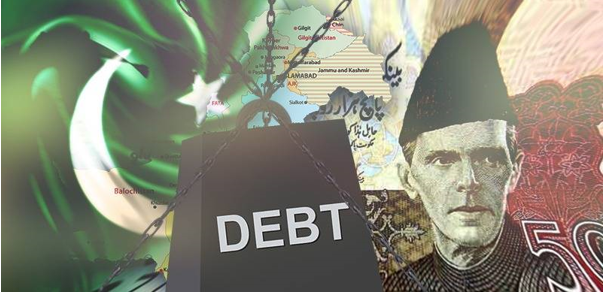INP-WealthPk
Qudsia Bano
Pakistan borrowed around $6.5 billion from multiple external sources during the first nine months (July-March) of the ongoing fiscal year 2024-25, raising fresh concerns among economic experts about the country’s growing reliance on debt to manage its fiscal needs.

According to the latest data from the Ministry of Economic Affairs, the country secured $5.51 billion from multilateral and bilateral sources as well as through the Naya Pakistan Certificate initiative. Additionally, Pakistan received a $1.03 billion tranche from the International Monetary Fund (IMF). However, this figure represents only 33.6% of the government’s annual external financing target of $19.393 billion, highlighting a significant shortfall in anticipated inflows.
In March alone, the government secured $555.2 million in external financing. The breakdown shows that $2.8 billion was obtained from multilateral agencies, $359.5 million from bilateral partners, $559.65 million from foreign commercial banks, and $1.455 billion from the Naya Pakistan Certificate scheme.
Despite securing external funds, experts have expressed alarm over Pakistan’s deepening dependence on loans to bridge its financial gaps. “Borrowing to meet short-term financing needs without corresponding structural reforms can trap Pakistan in a vicious cycle of debt,” warned Shahid Javed, a former senior economist at SBP. “The fact that only one-third of the annual target has been achieved by March suggests growing financing pressures that could worsen if global financial conditions tighten.”
Experts also noted that while loans provide breathing space, they cannot replace the need for sustainable revenue generation and economic reforms. “External borrowing should ideally be used for investment in productive sectors, not for plugging budget deficits,” said Asim Mustafa, Regional Head at Faysal Bank Limited. “Pakistan’s current model risks prolonging economic instability rather than resolving it.”
Compounding these concerns, Pakistan failed to issue any sovereign bonds during this period, despite a $1 billion budget target, due to unfavourable market conditions. This signals reduced access to global capital markets and growing dependence on concessional and bilateral sources.
“The underperformance of budgeted inflows, combined with rising debt servicing costs, presents a double challenge,” warned Mustafa. “Without major policy shifts, the government may face even greater liquidity stress in the coming months.”
As Pakistan continues to grapple with the twin challenges of external financing and economic reform, experts argue that borrowing alone cannot provide a sustainable solution. Fiscal consolidation, export growth, and domestic resource mobilisation are seen as critical steps toward breaking the cycle of debt dependence.
Credit: INP-WealthPk




